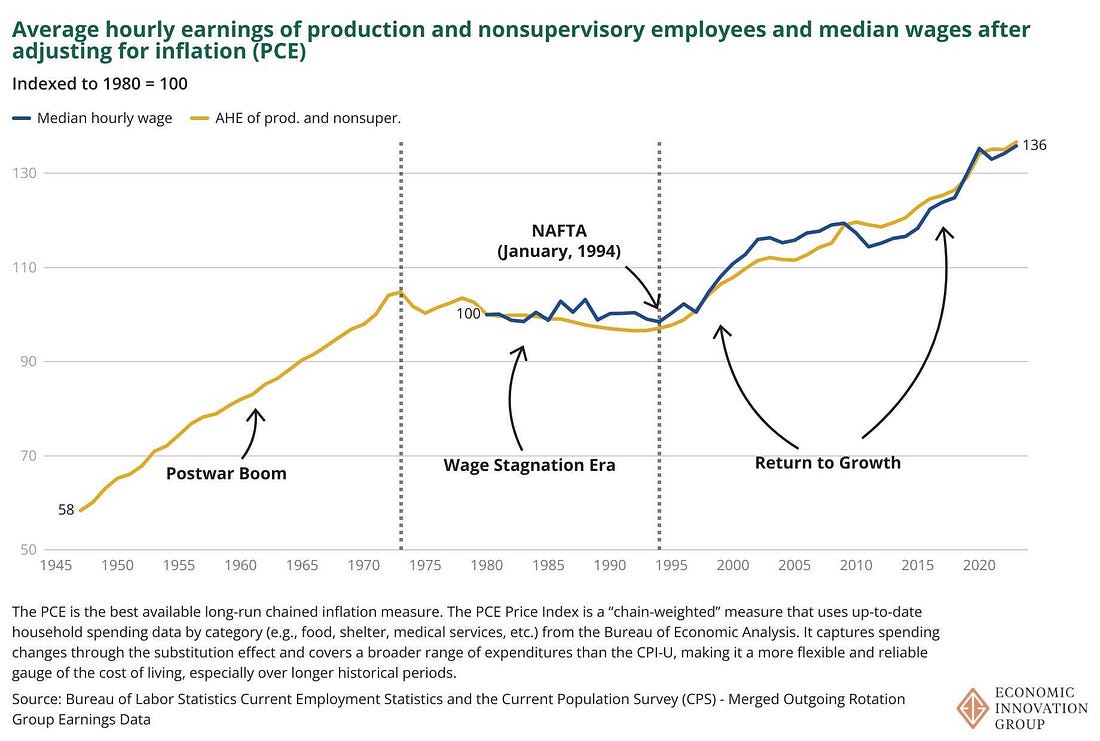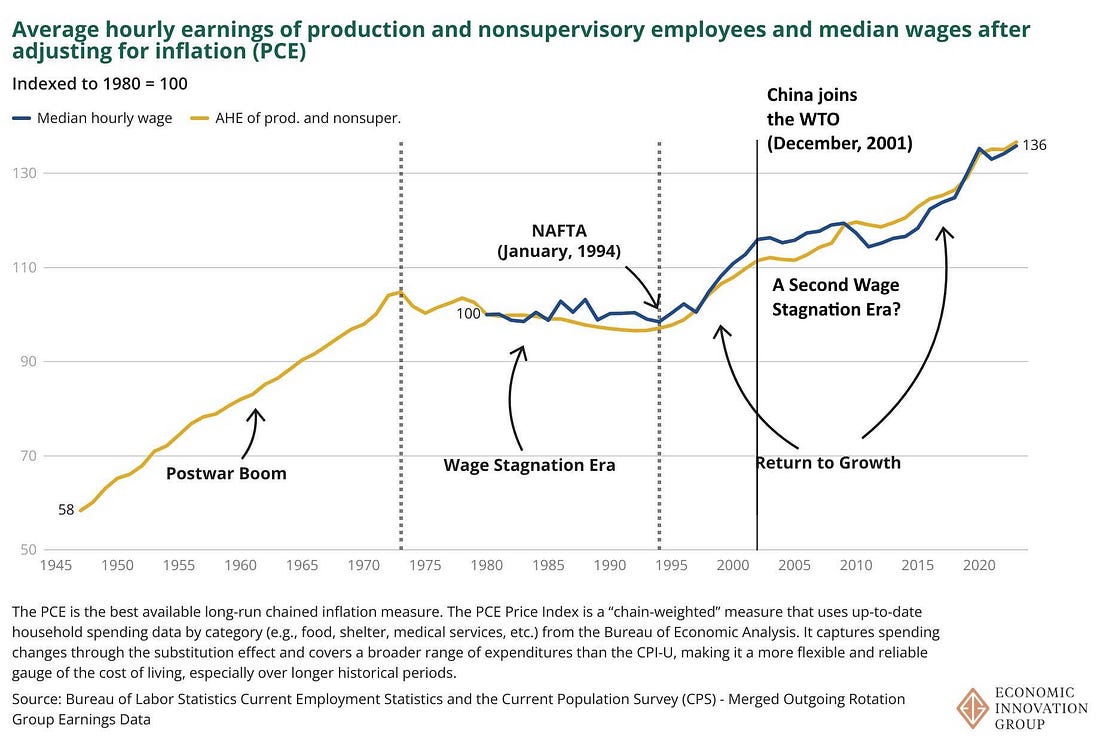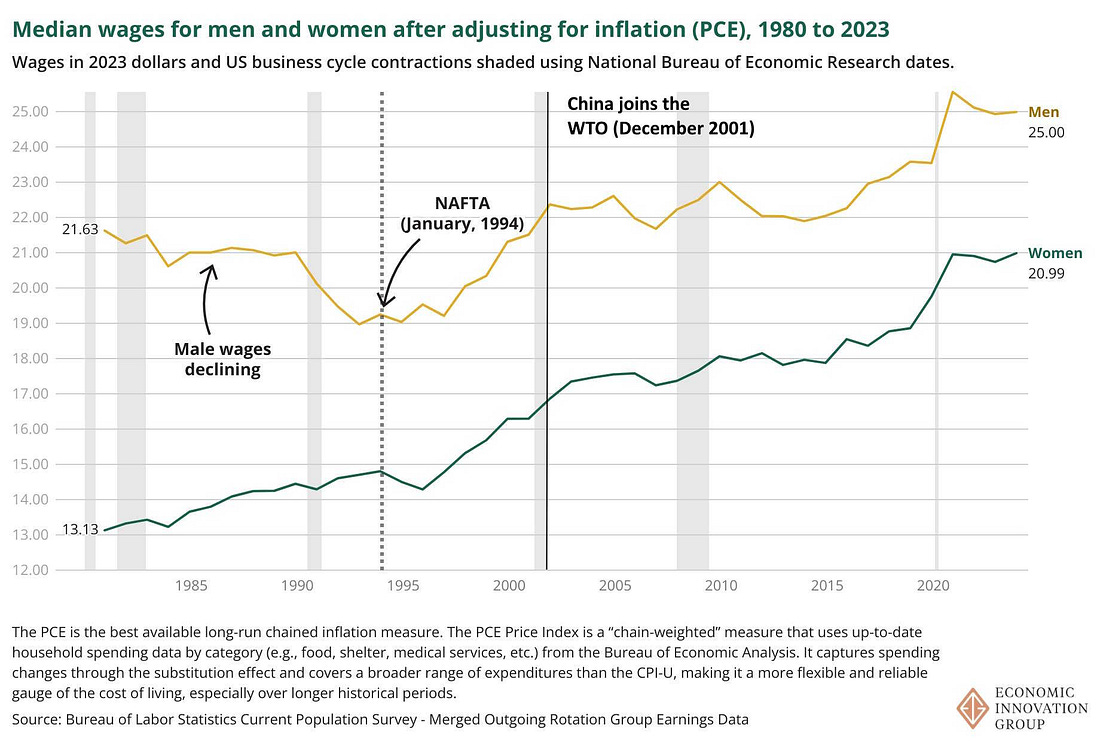|
So why *did* U.S. wages stagnate for 20 years?
There are a few theories, but none of them really satisfies.
 |
A week ago I wrote a post arguing that globalization didn’t hollow out the American middle class (as many people believe):
After I wrote the post, John Lettieri of the Economic Innovation Group wrote a great thread that strongly supports my argument. He showed that the timing of America’s wage stagnation — roughly, 1973 through 1994 — just didn’t line up well with the era of globalization that began with NAFTA in 1994. In fact, American wages started growing again right after NAFTA was passed. Check it out!
 |
In fact, wage growth since NAFTA has been almost as strong as in the decades after World War 2!
Now, I think this might be too simple of a story. Although there was a lot of noise and political hand-wringing over NAFTA, most Americans probably don’t think it was competition from Mexico that hollowed out the U.S. middle class — they think it was China. And while economists think NAFTA hurt some specific manufacturing industries in a few specific places, they generally conclude that it helped most Americans; it’s the China Shock, after China’s entry into the WTO in 2001, that many economists think was overall harmful to the working class.
And if you add the China Shock to Lettieri’s timeline, you see that by some measures — but not by others — there’s a second, shorter era of wage stagnation that lines up with it pretty well. I’ve modified Lettieri’s charts to show the China Shock:
 |
You can see that median wages flatten out between 2003 and 2015, while average hourly earnings of production and nonsupervisory workers continue to rise. Obviously the Great Recession is the biggest factor after 2007 (and many economists believe the China Shock only lasted through 2007). But there’s a good argument that Chinese competition did hold American wages down for a few years in the 2000s.
And in case you were wondering, here’s the breakdown for men and women:
 |
And Lettieri has more charts showing that the story looks the same for the working class as it does for the middle class.
So I think the story is more nuanced than Lettieri makes it out to be. The surge in middle-class and working-class wages in the late 1990s might have come in spite of some small headwinds from NAFTA, and the China Shock might have exerted a drag on American wages during the 2000s. But the much bigger story that these
